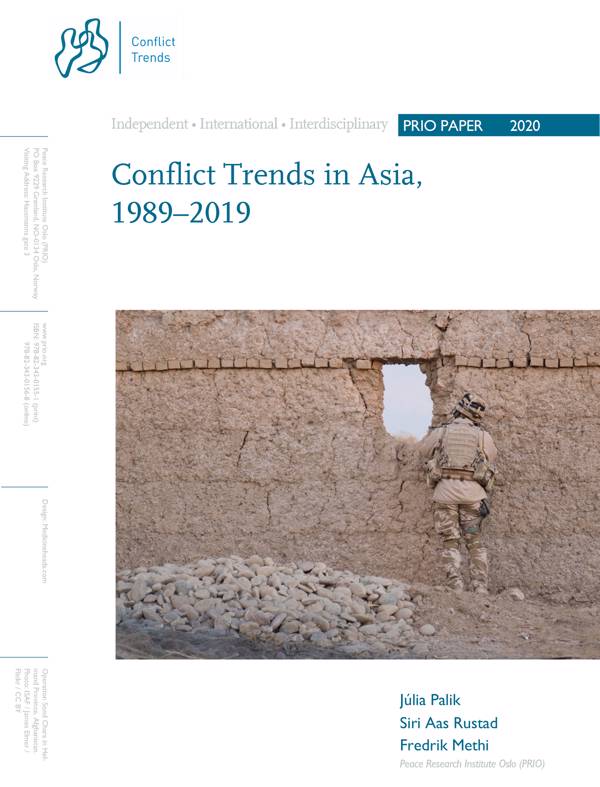This PRIO Paper takes a closer look at trends in conflicts in Asia between 1989 and 2019 and compares them to global trends, using data from the Uppsala Conflict Data Program (UCDP). In addition, the paper analyzes trends in ceasefires and peace agreements during the same period.
In the pre–Cold War period, Asia was the scene of some of the bloodiest conflicts in the world, but since then the number of state-based conflicts in the region has declined. Conflict trends in Asia are largely driven by the conflict in Afghanistan, which represented the most violent conflict in 2019, with almost 30,000 fatalities. The region experienced 15 state-based conflicts in 2019, in six different countries.
Contrary to global trends, Asia experienced a low level of non-state conflicts, with only three in 2019. Fatalities in Asia from one-sided violence – perpetrated by both governments and non-state actors – increased from 2018 to 2019, a trend largely driven by the conflict in Afghanistan. However, when compared with other world regions, the highest number of ceasefires concluded between 1989 and 2018 took place in Asia. Effective monitoring and early-warning systems should be established in potential conflict hotspots to prevent both the escalation of existing conflicts and the eruption of new ones.










